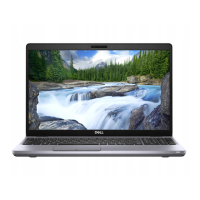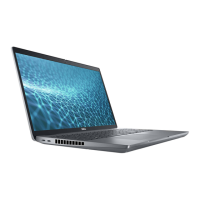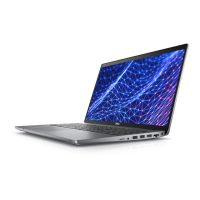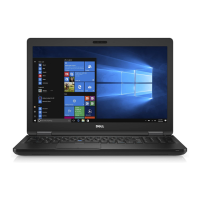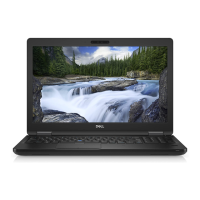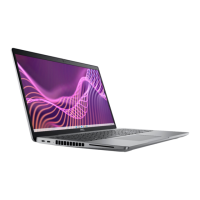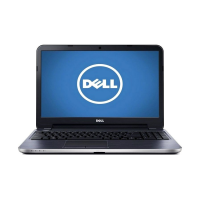How to fix Dell Latitude 5510 Laptop that does not power on?
- WwebbjessicaAug 6, 2025
To resolve the issue where your Dell Laptop doesn't power on or boot, perform a hard reset to drain any residual flea power.
How to fix Dell Latitude 5510 Laptop that does not power on?
To resolve the issue where your Dell Laptop doesn't power on or boot, perform a hard reset to drain any residual flea power.
What to do if Dell Latitude 5510 is unable to boot to the operating system?
If your Dell Laptop is unable to boot to the operating system, utilize Dell SupportAssist OS Recovery. This tool helps diagnose hardware problems, repair your computer, back up your files, and restore your computer to its original factory settings.
What to do if Dell Latitude 5510 battery is swollen?
If you notice a swollen lithium-ion battery in your Dell Laptop, immediately stop using the laptop. Disconnect the AC adapter and allow the battery to fully discharge. Swollen batteries are unsafe and should be replaced and disposed of correctly. Contact Dell product support to explore options for replacing the battery under your warranty or service contract.
What to do if display cable may not be connected properly on Dell Latitude 5510?
If the battery status LED on your Dell Laptop flashes an error code [2,7], it indicates that the display cable might not be properly connected. Check the connection of the display cable to ensure it is secure.
Guidelines to protect your computer from potential damage and ensure personal safety.
Steps to take before starting any disassembly or repair procedures.
Essential safety measures, including ESD protection and handling precautions.
Steps to follow after completing internal computer service.
Overview of USB standards, speeds, and applications.
Details on USB Type-C connector, power delivery, and Thunderbolt integration.
Explanation of HDMI 1.4 capabilities and advantages.
Describes the indicator lights for the power button with and without a fingerprint reader.
Instructions for removing and installing the microSD card.
Steps to remove and replace the bottom cover of the laptop.
Safety guidelines and steps for handling Lithium-ion batteries before removal.
Steps for removing and installing the Wireless Wide Area Network card.
Instructions for removing and installing the Wireless Local Area Network card.
Steps for removing and installing the coin-cell battery.
Instructions for removing and installing the system memory modules.
Steps for removing and installing the DC-in power port.
Instructions for removing and installing the M.2 Solid State Drive.
Steps for removing and installing the bracket for the solid state drive.
Instructions for removing and installing the laptop's inner frame.
Steps for removing and installing the SmartCard reader.
Instructions for removing and installing the touchpad button board.
Steps for removing and installing the LED board.
Instructions for removing and installing the system speakers.
Steps for removing and installing the system heat sink.
Instructions for removing and installing the system fan.
Steps for removing and installing the main system board.
Instructions for removing and installing the keyboard.
Steps for removing and installing the keyboard bracket.
Instructions for removing and installing the power button.
Steps for removing and installing the entire display assembly.
Instructions for removing and installing the display bezel.
Steps for removing and installing the display panel.
Instructions for removing and installing the camera module.
Steps for removing and installing the display hinge caps.
Instructions for removing and installing the display hinges.
Steps for removing and installing the display cable.
Instructions for replacing the display back cover assembly.
Steps for removing and installing the palmrest and keyboard assembly.
Introduction to BIOS, how to enter it, and navigation keys.
Details on one-time boot menu and general system setup configurations.
Options for configuring network, storage, USB, and Thunderbolt.
Configuration for LCD brightness, passwords, and TPM security.
Options for enabling/disabling Secure Boot and managing security keys.
Settings for processor performance, Intel SGX, and C-states.
Options for AC behavior, sleep states, and battery charging modes.
Settings for POST, Intel AMT, and virtualization support.
Options for wireless devices, maintenance tasks, and system event logs.
Instructions for updating the BIOS from Windows or a USB drive.
Updating BIOS via F12 menu and setting system/setup passwords.
Steps to assign, delete, or change system and setup passwords.
Procedures for clearing CMOS settings and BIOS/system passwords.
Safety guidelines and procedures for swollen batteries.
Using SupportAssist diagnostics and Built-in Self-Test (BIST).
How to perform LCD Power rail test (L-BIST) and LCD Built-in Self Test (BIST).
Explanation of battery status LEDs and diagnostic light codes.
Procedures for OS recovery, RTC reset, and backup options.
Steps for WiFi power cycle and draining residual flea power (hard reset).
Instructions on how to contact Dell for support and service.
Guidelines to protect your computer from potential damage and ensure personal safety.
Steps to take before starting any disassembly or repair procedures.
Essential safety measures, including ESD protection and handling precautions.
Steps to follow after completing internal computer service.
Overview of USB standards, speeds, and applications.
Details on USB Type-C connector, power delivery, and Thunderbolt integration.
Explanation of HDMI 1.4 capabilities and advantages.
Describes the indicator lights for the power button with and without a fingerprint reader.
Instructions for removing and installing the microSD card.
Steps to remove and replace the bottom cover of the laptop.
Safety guidelines and steps for handling Lithium-ion batteries before removal.
Steps for removing and installing the Wireless Wide Area Network card.
Instructions for removing and installing the Wireless Local Area Network card.
Steps for removing and installing the coin-cell battery.
Instructions for removing and installing the system memory modules.
Steps for removing and installing the DC-in power port.
Instructions for removing and installing the M.2 Solid State Drive.
Steps for removing and installing the bracket for the solid state drive.
Instructions for removing and installing the laptop's inner frame.
Steps for removing and installing the SmartCard reader.
Instructions for removing and installing the touchpad button board.
Steps for removing and installing the LED board.
Instructions for removing and installing the system speakers.
Steps for removing and installing the system heat sink.
Instructions for removing and installing the system fan.
Steps for removing and installing the main system board.
Instructions for removing and installing the keyboard.
Steps for removing and installing the keyboard bracket.
Instructions for removing and installing the power button.
Steps for removing and installing the entire display assembly.
Instructions for removing and installing the display bezel.
Steps for removing and installing the display panel.
Instructions for removing and installing the camera module.
Steps for removing and installing the display hinge caps.
Instructions for removing and installing the display hinges.
Steps for removing and installing the display cable.
Instructions for replacing the display back cover assembly.
Steps for removing and installing the palmrest and keyboard assembly.
Introduction to BIOS, how to enter it, and navigation keys.
Details on one-time boot menu and general system setup configurations.
Options for configuring network, storage, USB, and Thunderbolt.
Configuration for LCD brightness, passwords, and TPM security.
Options for enabling/disabling Secure Boot and managing security keys.
Settings for processor performance, Intel SGX, and C-states.
Options for AC behavior, sleep states, and battery charging modes.
Settings for POST, Intel AMT, and virtualization support.
Options for wireless devices, maintenance tasks, and system event logs.
Instructions for updating the BIOS from Windows or a USB drive.
Updating BIOS via F12 menu and setting system/setup passwords.
Steps to assign, delete, or change system and setup passwords.
Procedures for clearing CMOS settings and BIOS/system passwords.
Safety guidelines and procedures for swollen batteries.
Using SupportAssist diagnostics and Built-in Self-Test (BIST).
How to perform LCD Power rail test (L-BIST) and LCD Built-in Self Test (BIST).
Explanation of battery status LEDs and diagnostic light codes.
Procedures for OS recovery, RTC reset, and backup options.
Steps for WiFi power cycle and draining residual flea power (hard reset).
Instructions on how to contact Dell for support and service.
| Operating System | Windows 10 Pro |
|---|---|
| Processor | 10th Gen Intel Core i3/i5/i7 |
| Display | 15.6-inch FHD (1920 x 1080) or HD (1366 x 768) |
| RAM | Up to 64GB DDR4 |
| Storage | Up to 2TB PCIe NVMe SSD |
| Graphics | Intel UHD Graphics |
| Ports | 2 x USB 3.2 Gen 1, 1 x USB 3.2 Gen 1 Type-C, HDMI 1.4, RJ-45, SD Card Reader |
| Wireless | Intel Wi-Fi 6 AX201, Bluetooth 5.1 |
| Battery | 4-cell, 68 WHr ExpressCharge Capable |
